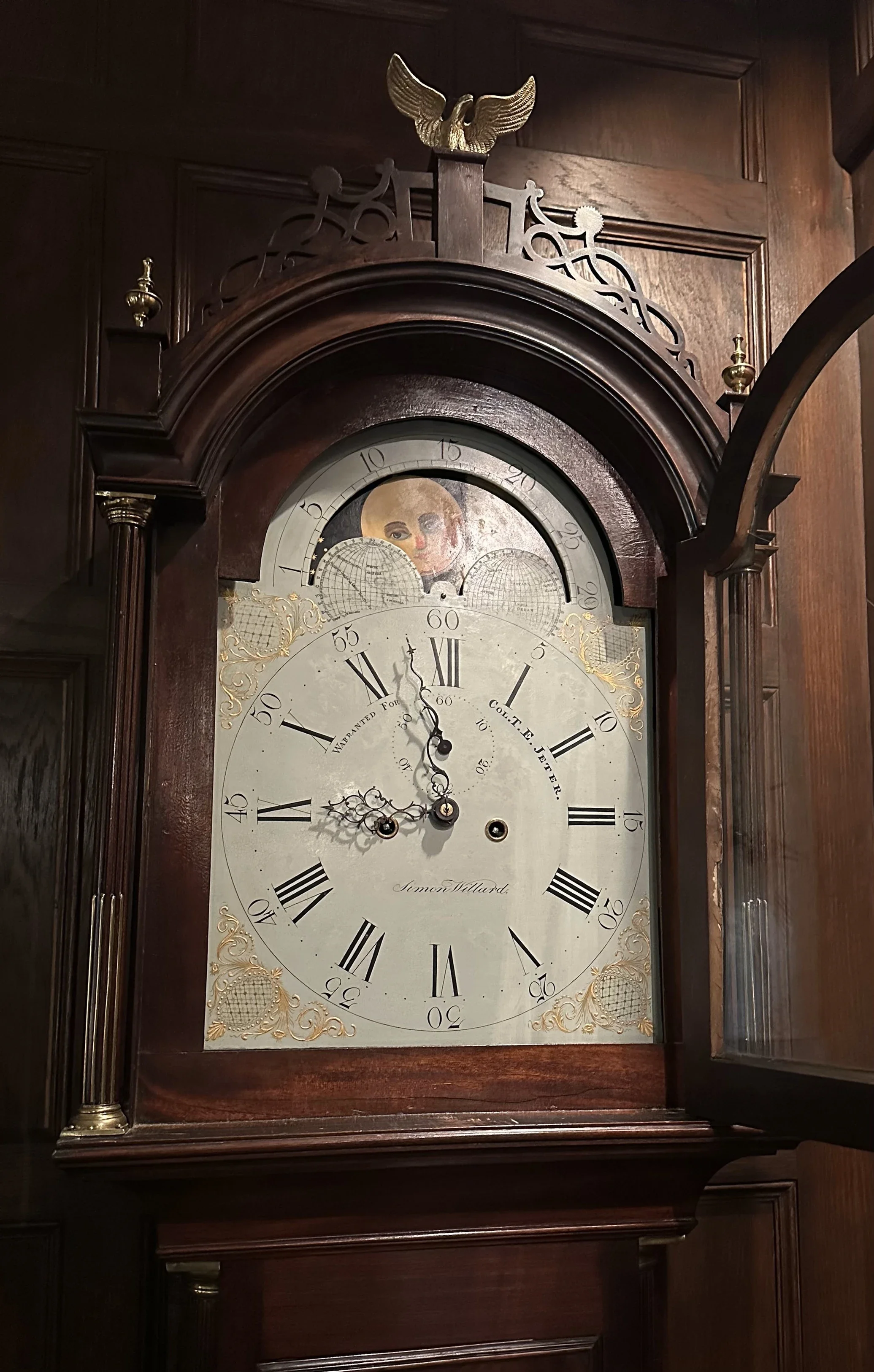Ticktock Goes the Willard Clock
A Simon Willard, Roxbury-style, tall case clock stands in the Williams Library here at Agecroft Hall. Roughly eight feet tall and two feet wide, this piece dates from the early 1800s and has been keeping time for over two hundred years. A proud piece from the Mortons' collection, the clockmaker, Simon Willard (1735-1848) was, perhaps, the most well-known clockmaker of the late 18th and early 19th centuries.
Willard Clock Face
Willard was considered the most important clockmaker of his time. His clocks are still displayed in many colleges, including Harvard, where Willard served as the official clock keeper for over 50 years. They are in many public buildings, like the Senate Chamber in the United States Capitol and many churches. His clocks are features in many museum collections, including ours here at Agecroft Hall. Next time you’re on tour here, be sure to take a minute to spot the Simon Willard tall case clock in the Williams Library.
Signature of Clockmaker Simon Willard (enlarged from clock face)
Simon Willard tall case clock



